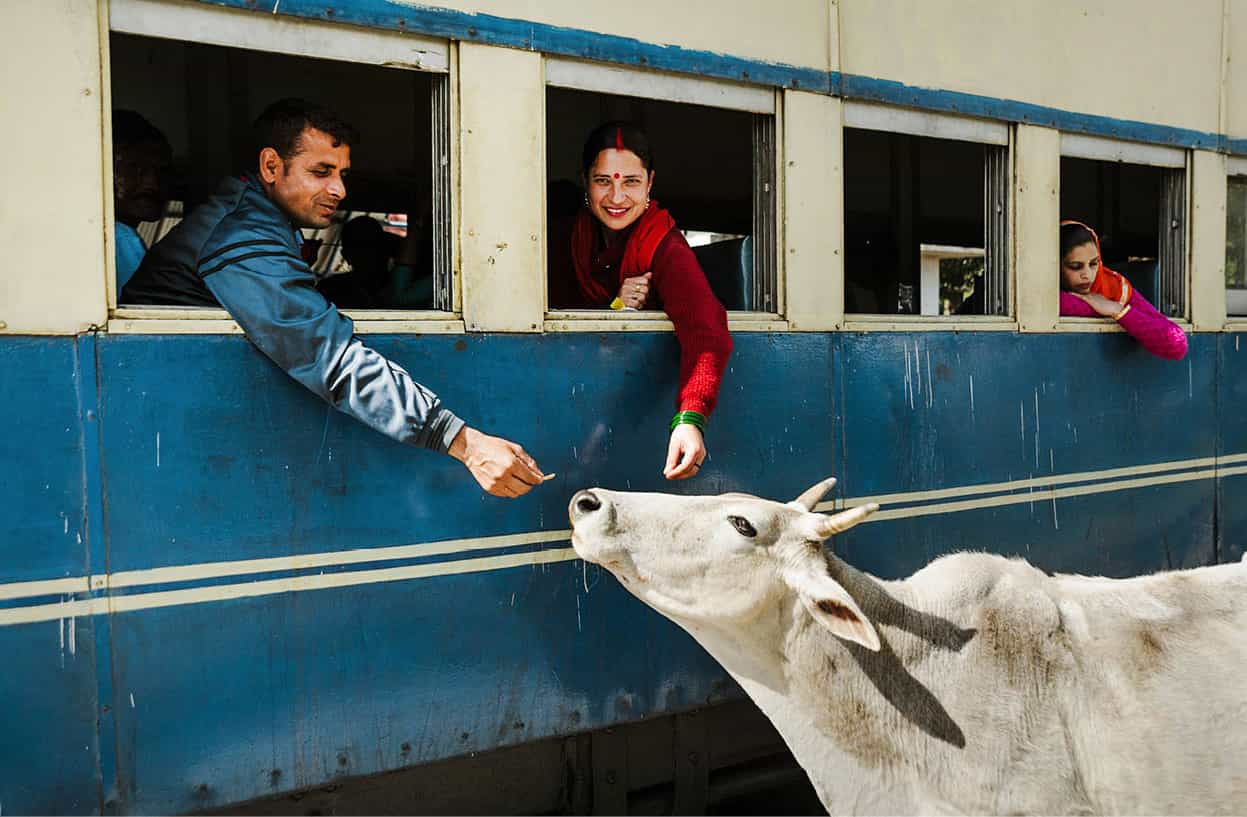Indian Railways is a huge state-run conglomerate, the world’s largest employer, with over a million staff. It moves 10 million passengers a day, yet still remains remarkably efficient – and uniquely poetic. There is no better way to get the pulse of the country than to view the changing scene from a carriage window.
The British laid most of the 62,000km (38,500 miles) of track in the 19th century, but it has been remarkably well maintained and modernised, while reservations are now computerised at most stations.
The stations themselves are hives of human activity, with passengers going one way, red-clad porters the other, and amongst them all a succession of hawkers selling everything from tea to snacks to peanuts to magazines, each belting out their sales pitch more exuberantly than the other. Things calm down a notch once you are inside the train, although silence is definitely rare: those same hawkers often find their way on board, families roam around, doors and windows open and close in a refreshingly un-automated manner.
The scenery can be breathtaking, particularly along the coasts, with the Mumbai–Goa stretch an all-time favourite. The hill railways of India are famous for their character and quaintness, often served by ‘toy trains’ – narrow carriages ride narrow rails at impossible inclines as forests and occasional panoramic views pass by on either side.

Local train in Mumbai
iStock
Rail tourism